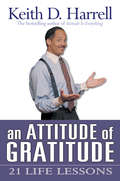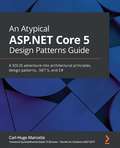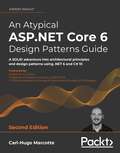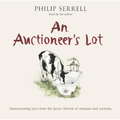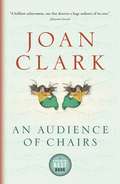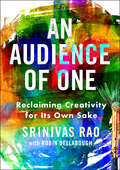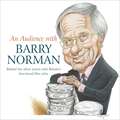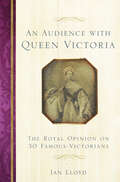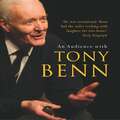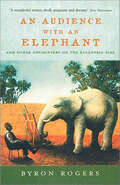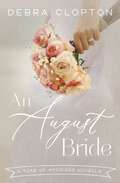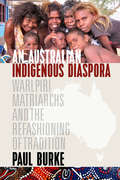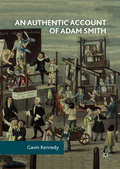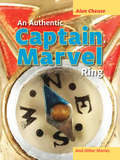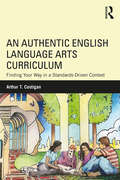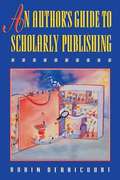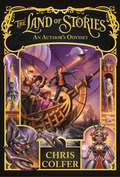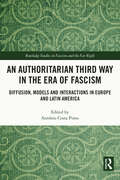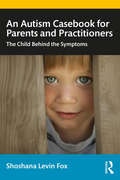- Table View
- List View
An Attic Philosopher, complete
by Emile SouvestreAlways to mistake feeling for evidence Ambroise Pare: 'I tend him, God cures him!' Are we then bound to others only by the enforcement of laws Attach a sense of remorse to each of my pleasures Brought them up to poverty But above these ruins rises a calm and happy face Carn-ival means, literally, "farewell to flesh! Coffee is the grand work of a bachelor's housekeeping Contemptuous pride of knowledge Death, that faithful friend of the wretched Defeat and victory only displace each other by turns Did not think the world was so great Do they understand what makes them so gay? Each of us regards himself as the mirror of the community Ease with which the poor forget their wretchedness Every one keeps his holidays in his own way Fame and power are gifts that are dearly bought Favorite and conclusive answer of his class--"I know" Fear of losing a moment from business Finishes his sin thoroughly before he begins to repent Fortune sells what we believe she gives Her kindness, which never sleeps Houses are vessels which take mere passengers Hubbub of questions which waited for no reply I make it a rule never to have any hope Ignorant of what there is to wish for Looks on an accomplished duty neither as a merit nor a grievance Make himself a name: he becomes public property Moderation is the great social virtue More stir than work My patronage has become her property No one is so unhappy as to have nothing to give Not desirous to teach goodness Nothing is dishonorable which is useful Our tempers are like an opera-glass Poverty, you see, is a famous schoolmistress Power of necessity Prisoners of work Progress can never be forced on without danger Question is not to discover what will suit us Richer than France herself, for I have no deficit in my budget Ruining myself, but we must all have our Carnival Satisfy our wants, if we know how to set bounds to them Sensible man, who has observed much and speaks little So much confidence at first, so much doubt at las Sullen tempers are excited by the patience of their victims The happiness of the wise man costs but little The man in power gives up his peace Two thirds of human existence are wasted in hesitation Virtue made friends, but she did not take pupils We do not understand that others may live on their own account We are not bound to live, while we are bound to do our duty What have you done with the days God granted you What a small dwelling joy can live You may know the game by the lair
An Attitude of Excellence: Get The Best From Yourself, Your Team, and Your Organization
by Dr. Willie JolleyYou imagine a "new and improved" version of yourself—one who has achieved your goals and reached your definition of success. But you stop at wanting to be better because you don't feel you have the tools to achieve it. You do have the power to make yourself into a winner. Success isn't a matter of chance—it's a matter of choice. It all comes down to your attitude and a mindset to pursue excellence. When you make the conscious choice to develop an attitude of excellence, you will achieve more, enjoy more, have better relationships, take better care of yourself physically and mentally, and vastly improve the quality of your day-to-day life. Armed with a positive attitude and the determination to pursue excellence, plus a coach to help you stay focused, you will become the best version of yourself. Dr. Willie Jolley is a world-renowned speaker and motivational coach. He is the expert Ford Motor Company turned to while on the brink of bankruptcy, and he helped the company go on to reject a government bailout and to reach billion-dollar profits. In this powerful new book, An Attitude of Excellence: Get the Best from Yourself, Your Team, and Your Organization, he teaches readers how to achieve more in their lives—both professionally and personally. Dr. Jolley's work has inspired millions with a simple message: The best way to grow your future is to grow yourself, and the best way to grow an organization is to grow the people in that organization. Why? Because great people will give great service, while negative people will kill your future. This eye-opening book features T.I.P.S. (Tips, Ideas, Principles & Strategies) everyone can use to enhance the quality of our relationships and our lives, both at work and at home, using the power of an attitude of excellence.
An Attitude of Gratitude: 21 Life Lessons
by Keith D. HarrellIn this heartfelt memoir, motivational speaker and life coach Keith D. Harrell writes passionately about the lessons he’s learned from his parents, grandmother, teachers, coaches, mentors, and friends as he overcame stuttering to become one of the nation’s top-ranked professional speakers. Tall, skinny and shy, Harrell painfully learned on his first day of school that he couldn’t talk like the other students. Embarrassed by the kids’ teasing and feeling dejected, he ran home during recess, where he was met by an understanding mom who wouldn’t allow him to remain discouraged. The lesson Harrell gained from this experience and imparts to his readers is: God specializes in originals. He doesn’t make junk! Each chapter in this heartfelt book begins with a quote from the Bible and concludes with a touching and insightful life lesson. Harrell’s story encompasses his years of speech therapy, the awkwardness of being a foot or two taller than his elementary-school teachers, his father’s tough love, the anguish of his parents’ divorce, gaining confidence through playing basketball—and eventually being scouted by the NBA and then watching his dream evaporate. He goes on to recount the trials he underwent in the corporate world as he sought out his true passion, and how he built a fledgling business into a million-dollar enterprise, eventually receiving enormous acclaim as a professional speaker. Harrell’s faith in God and unflagging attitude propelled him to success as he enthusiastically tackled each obstacle that beset him along his path. In An Attitude of Gratitude, he presents this story as an inspiring source of encouragement for anyone who has ever experienced setbacks and wants to learn how to become better equipped to handle each challenge as it arises.
An Attorney's Guide to ERISA Disability Claims
by Scott RiemerAn Attorney's Guide to ERISA Disability Claims is an essential resource that gives you the specialized knowledge you need to thoroughly prepare ERISA disability claims through both the initial application process and the insurance company's appeal process. Disability insurers scrutinize claims for any shred of evidence to support a decision that the insured can still perform her occupation. Sometimes just a line or two in the doctor's treatment notes or a minute on a surveillance video is enough. In assessing an occupation's requirements, insurers routinely ignore significant demands, such as travel, long hours, high stress, and quick thinking. This comprehensive guide tells you how to anticipate and respond to these and similar (sometimes outrageous) insurer tactics. The surest way to resolve your client's ERISA disability claim favorably without litigation is to follow Scott Riemer's guidance. Prepare your client's application and appeal as though you expect litigation to be necessary. When insurers know you are ready for court, they are more likely to pay the claim and save litigation for someone else's client. If you do need to litigate, you will be ready.
An Atypical ASP.NET Core 5 Design Patterns Guide: A SOLID adventure into architectural principles, design patterns, .NET 5, and C#
by Carl-Hugo Marcotte Abdelhamid ZebdiA .NET developer's guide to crafting robust, maintainable, and flexible web apps by leveraging C# 9 and .NET 5 features and component-scale and application-scale design patternsKey FeaturesApply software design patterns effectively, starting small and progressing to cloud-scaleDiscover modern application architectures such as vertical slice, clean architecture, and event-driven microservicesExplore ASP.NET design patterns, from options to full-stack web development using BlazorBook DescriptionDesign patterns are a set of solutions to many of the common problems occurring in software development. Knowledge of these design patterns helps developers and professionals to craft software solutions of any scale. ASP.NET Core 5 Design Patterns starts by exploring basic design patterns, architectural principles, dependency injection, and other ASP.NET Core mechanisms. You'll explore the component scale as you discover patterns oriented toward small chunks of the software, and then move to application-scale patterns and techniques to understand higher-level patterns and how to structure the application as a whole. The book covers a range of significant GoF (Gangs of Four) design patterns such as strategy, singleton, decorator, facade, and composite. The chapters are organized based on scale and topics, allowing you to start small and build on a strong base, the same way that you would develop a program. With the help of use cases, the book will show you how to combine design patterns to display alternate usage and help you feel comfortable working with a variety of design patterns. Finally, you'll advance to the client side to connect the dots and make ASP.NET Core a viable full-stack alternative. By the end of the book, you'll be able to mix and match design patterns and have learned how to think about architecture and how it works.What you will learnApply the SOLID principles for building flexible and maintainable softwareGet to grips with .NET 5 dependency injectionWork with GoF design patterns such as strategy, decorator, and compositeExplore the MVC patterns for designing web APIs and web applications using RazorDiscover layering techniques and tenets of clean architectureBecome familiar with CQRS and vertical slice architecture as an alternative to layeringUnderstand microservices, what they are, and what they are notBuild ASP.NET UI from server-side to client-side BlazorWho this book is forThis design patterns book is for intermediate-level software and web developers with some knowledge of .NET who want to write flexible, maintainable, and robust code for building scalable web applications. Knowledge of C# programming and an understanding of web concepts like HTTP is necessary.
An Atypical ASP.NET Core 6 Design Patterns Guide: A SOLID adventure into architectural principles and design patterns using .NET 6 and C# 10, 2nd Edition
by Carl-Hugo Marcotte Abdelhamid ZebdiThe professional developer's essential guide to building robust, maintainable, and flexible web apps by leveraging C# 10 and .NET 6 features and component- and application-scale design patternsKey FeaturesApply the SOLID architectural principles and software design patterns effectively with a focus on dependency injectionDiscover modern application architectures such as vertical slice, clean architecture, and event-driven microservicesExplore full-stack ASP.NET Core with an overview of BlazorBook DescriptionAn Atypical ASP.NET Core 6 Design Patterns Guide, Second Edition approaches programming like playing with LEGO®: snapping small pieces together to create something beautiful. Thoroughly updated for ASP.NET Core 6, with further coverage of microservices patterns, data contracts, and event-driven architecture, this book gives you the tools to build and glue reliable components together to improve your programmatic masterpieces.The chapters are organized based on scale and topic, allowing you to start small and build on a strong base, the same way that you would develop a program. You will begin by exploring basic design patterns, SOLID architectural principles, dependency injection, and other ASP.NET Core 6 mechanisms. You will explore component-scale patterns, and then move to higher level application-scale patterns and techniques to better structure your applications. Finally, you'll advance to the client side to connect the dots with tools like Blazor and make ASP.NET Core a viable full-stack web development framework.You will supplement your learning with practical use cases and best practices, exploring a range of significant Gang of Four (GoF) design patterns along the way. By the end of the book, you will be comfortable combining and implementing patterns in different ways, and crafting software solutions of any scale.What you will learnApply the SOLID principles for building flexible and maintainable softwareGet to grasp .NET dependency InjectionWork with GoF design patterns such as strategy, decorator, facade, and compositeExplore the MVC patterns for designing web APIs and web applications using RazorDiscover layering techniques and tenets of clean architectureBecome familiar with CQRS and vertical slice architecture as an alternate to layeringUnderstand microservices and when they can benefit your applicationsBuild an ASP.NET user interfaces from server-side to client-side BlazorWho this book is forThe book is intended for intermediate software and web developers with an understanding of .NET who want to write flexible, maintainable, and robust code for building scalable web applications. Knowledge of C# programming and an understanding of web concepts like HTTP is necessary.
An Auctioneer's Lot
by Philip SerrellFrom priceless eighteenth-century dining tables hidden away in decaying farm sheds to tattooed travellers with a penchant for Wedgewood china, professional auctioneer Philip Serrell has seen it all. In An Auctioneer's Lot he brings to life a world in which the most valuable antiques frequently turn up in the most unlikely places - and accompanied by the most unlikely people. For over twenty years he has uncovered a huge range of priceless (and occasionally worthless) antiques, and he has met, done business with and befriended people from some odd corners of English life. Funny, startling and sometimes poignant, these stories of ordinary people with extraordinary possessions are also the perfect inspiration for anyone who's ever wondered whether they might just be sitting on a fortune . . .
An Auctioneer's Lot
by Philip SerrellFrom priceless eighteenth-century dining tables hidden away in decaying farm sheds to tattooed travellers with a penchant for Wedgewood china, professional auctioneer Philip Serrell has seen it all. In An Auctioneer's Lot he brings to life a world in which the most valuable antiques frequently turn up in the most unlikely places - and accompanied by the most unlikely people. For over twenty years he has uncovered a huge range of priceless (and occasionally worthless) antiques, and he has met, done business with and befriended people from some odd corners of English life. Funny, startling and sometimes poignant, these stories of ordinary people with extraordinary possessions are also the perfect inspiration for anyone who's ever wondered whether they might just be sitting on a fortune . . .
An Audience for Einstein
by Mark WakelyProfessor Percival Marlowe is a brilliant, elderly astrophysicist who's dying, his greatest achievement still unfinished and now beyond his diminished means. Doctor Carl Dorning, a neurosurgeon, finally discovers a secret method of transplanting memories from one person to another, thanks to Marlowe's millions. Miguel Sanchez, a homeless boy, agrees to become the recipient of Marlowe's knowledge and personality in this unorthodox experiment, enticed by Dorning's promises of intelligence, wealth and respect, but dangerously unaware that his own identity will be lost forever. What results is a seesaw battle for control of Miguel's body, as Marlowe learns to his dismay what his lifetime of arrogance and conceit has earned him. And when Marlowe stumbles upon the shocking procedure Dorning used in desperation to succeed, the professor does what he must to defeat Dorning and redeem himself at last.
An Audience of Chairs
by Joan ClarkJoan Clark's An Audience of Chairs opens with Moranna MacKenzie living alone in her ancestral Cape Breton farmhouse, waging a war with the symptoms of bipolar disorder and grieving the loss of her two daughters, taken from her over thirty years previously. There are few people remaining in her life, as Moranna cannot help but tax the patience of nearly everyone she encounters. Her long-suffering brother Murdoch has her best interests at heart, though he is fatigued by her enormous needs and pressured by his ambitious wife to invest less time in her. Pastor Andy politely sloughs off the peculiarly intelligent yet unpalatable sermons Moranna pens for him. Her neighbour Lottie knows what it is to be an eccentric and can be counted on to come through in a pinch. The local RCMP constabulary smooths over her legal scrapes. And her lover Bun, who lives with her when not working on the ferries between Cape Breton and Newfoundland, knows how to give her a wide berth on her "foul weather" days. Thanks to the assistance of these sometimes reluctant guardian angels, as well as to the carefully planned inheritance left by her father (not to mention her own sheer ingenuity), Moranna has managed to get by all these years despite small-town gossips and tormenting youths.Through a series of flashbacks, we learn more about the devastating effects of Moranna' s mental illness on her life and that of her family. But An Audience of Chairs also gives us a glimpse into the mind of a true iconoclast and wild spirit, who has managed despite overwhelming odds to keep hope alive.Of An Audience of Chairs, Quill and Quire said: "Elegantly written and deeply grounded in place, this moving, compassionate novel is far more than a story of mental illness. Moranna's quest is for peace, joy, and connection-the same yearnings that drive us all." of a true iconoclast and wild spirit, who has managed despite overwhelming odds to keep hope alive.In her early years, Moranna's accomplishments and beauty, along with the protection of a father who saw glimmers of his suicidal wife in his beloved daughter, allow her to struggle through childhood and adolescence in Sydney Mines relatively unscathed. She is a gifted pianist, a magazine covergirl, and a promising actress when she makes a brilliant marriage to an up-and-coming young journalist, Duncan. But she soon finds herself unmoored by motherhood, and the oddities that the people in her life have always chosen to overlook become more difficult to disguise with drama and wit when maternal expectations are placed upon her. Her staged life comes crashing down around her ears when she is left alone with her daughters and in a manic artistic phase risks their lives terribly. Her family can no longer explain away her eccentricities, her husband forsakes her, and she is institutionalized, her children taken from her forever.No longer playing the roles of perfect daughter, wife and mother, the devastated Moranna falteringly gropes for purpose in her life. She returns to the inherited Baddeck farmhouse and, inspired by a vision she has of her great-aunt Hettie, whose stories of their Scottish ancestors once filled the youthful Moranna's imagination with stories of valour, earns a small income as a woodcarver. She carves for tourist sales the courageous and larger-than-life people of her clan, to whose histories she clings in order to reinforce her belief in her pedigree as a lionheart, so much more comforting than the spectre of madness lurking in her maternal lineage.She enthralls the audiences in her mind - in reality an audience of chairs - with daily virtuoso performances on the piano board, a silent keyboard upon which she does battle with her demons through the music of Chopin and Rachmaninov.Through these and other ingenious - and often hilarious - strategies, Moranna has over the years constructed a life of delicate balance, all of which is jeopardized one day by a glimpse of television. Visiting town with Bun, she is astonished to see her now-grown daughter Bonnie being interviewed for a local station about a ...
An Audience of One: Reclaiming Creativity for Its Own Sake
by Srinivas RaoThe creator of the Unmistakable Creative podcast makes a counterintuitive argument: By focusing your creative work on pleasing yourself, you can increase your productivity, happiness, and (eventually, paradoxically) the size of your audience.Creating for your own pleasure--whether you're writing a novel, composing songs, or painting a landscape--can seem pointless. It's tempting to focus on pursuing money and fame, rather than the process itself. But as Srini Rao warns, creating then turns into a chore that can harm your self-esteem and suck the pleasure out of life, rather than being a source of joy.Rao, host of the podcast The Unmistakable Creative, argues that we should counter this thinking by intentionally creating art for ourselves alone--an audience of one. In this book he shares the fascinating true stories of creatives who took this path, along with actionable tips and the research of creativity experts. You'll learn, for example: * How Oprah's intentional focus on her own work rather than the opinions of everyone else catapulted her into one of the most popular talk shows of all time. * How being process-driven can not only help you produce more work, but can make you happier outside of your creative time. * How to put together a creative "team of rivals" whose feedback can help you hone your craft and filter out useless feedback.By playing to an audience of one, we can find more happiness, increased productivity, and a greater sense of community.
An Audience with Barry Norman
by Barry NormanBarry Norman is Britain's best known and most respected film critic and he was the presenter of the celebrated Film... series on BBC television for more than 25 years.In his popular one-man show Barry recalls the most memorable moments in his long career with a rich and varied selection of anecdotes about his encounters with Richard Burton and Elizabeth Taylor, Peter Sellers, John Wayne, Robert De Niro, Michelle Pfeiffer and many more.Barry Norman is a knowledgeable and witty raconteur and this is a unique opportunity for film lovers to hear many great stories about Hollywood's most famous stars and their antics both on and off screen.(p) 2004 BarryMour Productions
An Audience with Queen Victoria: The Royal Opinion on 30 Famous Victorians
by Ian LloydOne of Britain’s most famous and longest serving rulers, Queen Victoria saw widespread change across her empire. During her sixty-three-year reign, in which she became one of the most powerful and influential people in the world, Victoria met everyone from Florence Nightingale to ‘Buffalo Bill’, as well as royalty from around the world with whom she exchanged truly unique gifts. After meeting the exalted monarch her subjects often recorded their impressions of her, sometimes favourable and sometimes not, and she wasn’t shy with her opinion either. The records range from her less than enamoured assessment of ‘Greatest Showman’ P.T. Barnum and her opinions about Jack the Ripper, to how much she enjoyed Jane Eyre and the affection she held for her family. An Audience with Queen Victoria examines the meetings and letters exchanged between the Queen and a veritable ‘who’s who’ of her time. Through brand-new archival research, newspapers and interviews with descendants, sit right alongside Victoria and, for the first time, experience queenship from her perspective.
An Audience with Tony Benn
by Tony BennAfter he announced his retirement to 'spend more time with politics', much loved parliamentarian Tony Benn brought his unmistakable presence to the stage in a sell-out 'Evening With' event. His only props: a flask of tea, some rubbed tobacco and his trademark pipe...An Audience with Tony Benn is a mix of politics, opinion and debate as the man himself explores issues of today spiced with memories of the past. He then fields questions from a live audience, answered with his usual mixture of insight, analysis and piercing wit.(P)2002 Hodder & Stoughton Audiobooks
An Audience with an Elephant: And Other Encounters on the Eccentric Side
by Byron RogersAn Audience with an Elephant is a compendium of the oddest and most eccentric travels—a travel book to set alongside Norman Lewis and Eric Newby for the sheer unpredictability of its encounters and its surreal comedy. But Bryon Rogers didn&’t venture to the ends of the earth to find singular custom and heroic idiosyncrasy: he had no need to. These are journeys to the heart of the strange and distant land of Britain. On his travels he meets the Turkish POW in British hands—an ancient tortoise captured at Gallipoli and now resident in Great Yarmouth—and the teenaged elephant who has opened more fetes and supermarkets than any TV celebrity. Here, too, are such bizarre figures as the octogenarian triathlete, the man who (before such things were banned) held every world eating record, and the last hangman in his untroubled retirement. Whether exploring the middle of England in the forgotten county of Northamptonshire or accompanying the last tramp through the wilder reaches of Wales, Byron Rogers chronicles a secret history of Britain that is touching, hilarious, magical and the extraordinary lives or ordinary people.
An August Bride (A Year of Weddings Novella)
by Debra CloptonA year&’s worth of novellas from twelve inspirational romance authors. Happily ever after guaranteed.As far as Kelsey Wilcox is concerned, her last cowboy was the last cowboy. Kelsey Wilcox has had enough of cowboys. After the last one broke her heart, Kelsey traded in her boots for flip-flops, and the open range for a bistro on the beach. Her life on Corpus Christi&’s gorgeous beach might be a little lonely, but at least it&’s heartbreak-free. At least until her cousin&’s beachside wedding bucks Kelsey right back into the rodeo.When unlucky-in-love Brent Corbin packed his groomsman&’s tux for his friend&’s wedding, he brought his boots and belt buckle with him. Brent isn&’t exactly looking for love, but when he sees what appears to be a mermaid in distress, he jumps right in to rescue her. So Kelsey finds herself plucked from the sea—and certain-drowning—by a gorgeous groomsman . . . in soaked cowboy boots. She&’s quick to say thanks, but no thanks.Brent dedicates the weekend to pursuing Kelsey—and Kelsey spends the weekend trying to deny an obvious match. She&’s as stubborn as a wild horse, but Brent&’s determination may tame her yet.
An Australian Ballot for California?
by David A. Moss Dean Grodzins Marc CampasanoIn early 1891, California lawmakers were considering a plan to reform the state's elections through the introduction of an "Australian" ballot. Under this new system, candidates from all qualifying parties would appear on official ballots, which would be printed by county and municipal governments and which voters would ultimately fill out in secret. This would mark a substantial departure from the existing way in which votes were cast in California, or for that matter in most of the United States. Traditionally, political groups prepared and distributed party-line ballots, called "tickets," for voters to submit at the polls. Because each party ticket was visually distinctive (in most cases, distinguished by a particular color), it was easy for observers to determine how individual citizens had voted as they handed in their ballots. Closely monitoring the ballot boxes, representatives of the party "political machines" frequently paid supporters who voted for the machine ticket and sought to punish those who did not. Supporters of the Australian ballot promised it would end these abuses, bring greater secrecy and honesty to California's elections, and loosen the grip of party machines on the state and municipal governments. Despite some opposition in Republican circles, the Republican-dominated Assembly and Senate both passed the ballot bill by large margins in early March and sent it on to the Republican governor, Henry Markham, for his signature. If Markham signed the bill into law, California would join a growing roster of U.S. states using the new, secret ballot, and reformers would claim another victory in their battle against political machines.
An Australian Indigenous Diaspora: Warlpiri Matriarchs and the Refashioning of Tradition
by Paul Burke<p>Some indigenous people, while remaining attached to their traditional homelands, leave them to make a new life for themselves in white towns and cities, thus constituting an “indigenous diaspora”. <p>This innovative book is the first ethnographic account of one such indigenous diaspora, the Warlpiri, whose traditional hunter-gatherer life has been transformed through their dispossession and involvement with ranchers, missionaries, and successive government projects of recognition. <p>By following several Warlpiri matriarchs into their new locations, far from their home settlements, this book explores how they sustained their independent lives, and examines their changing relationship with the traditional culture they represent.</p>
An Authentic Account of Adam Smith
by Gavin KennedyThis book is a textual criticism of modern ideas about the work of Adam Smith that offers a new perspective on many of his famous contributions to economic thought. Adam Smith is often hailed as a leading figure in the development of economic theories, but modern presentations of his works do not reflect Smith's actual ideas or influence during his lifetime. Gavin Kennedy believes that Smith's name and legacy were often appropriated or made into myths in the 19th and 20th centuries, with many misconceptions persisting today. Offering new analysis of works on rhetoric, moral sentiments, jurisprudence, the invisible hand, The Wealth of Nations, and Smith's very private views on religion, the book gives a new perspective on this important canonical thinker
An Authentic Captain Marvel Ring and Other Stories
by Alan CheuseThe very best short stories and novellas from National Public Radio's Alan Cheuse are brought together in a quintessential collection. Countless listeners depend on the book reviews from Cheuse, America's "voice of books," and many of those listeners also follow his own critically acclaimed fiction and nonfiction. The title story--a flash fiction piece that acts as both prologue and an intriguing look at a writer's inspiration--takes us through a child's eyes into a fantastic land, one that informs, shapes, and travels along with the other stories in this stunning collection. These stories deal with life, death, love, family, work, and a deep exploration of the soul.
An Authentic English Language Arts Curriculum: Finding Your Way in a Standards-Driven Context
by Arthur T. CostiganThis book provides ways of thinking for preservice and new teachers to transition from the theory behind curricular design to engaged teaching and learning in the classroom. It offers a comprehensive framework for the creation and implementation of one’s own authentic and effective ELA curriculum. In addition to strategies for preservice teachers to develop their own pedagogies, lessons, and teaching techniques, Costigan also demonstrates how to design tools for teaching in the current testing- and standards-driven context of the educational reform movement. Containing real-life examples of reading and writing instruction, this book empowers preservice teachers to translate the concepts of curriculum design to actual ELA classroom practices that will engage students.
An Author's Guide to Scholarly Publishing
by Robin DerricourtDirectly specifically to academic authors, this realistic handbook is a guide to publishing success for both beginning and seasoned scholars.
An Author's Odyssey: Book 5 (The Land of Stories #5)
by Chris ColferThe 5th book in the No.1 New York Times bestselling series by Chris ColferIn the highly anticipated continuation of the Land of Stories series, Conner learns that the only place to fight the Masked Man's literary army is inside his own short stories! When the twins and their friends enter worlds crafted from Conner's imagination, finding allies no one else could have ever dreamed of, the race begins to put an end to the Masked Man's reign of terror. Can the twins finally restore peace in the fairy tale world?
An Authoritarian Third Way in the Era of Fascism: Diffusion, Models and Interactions in Europe and Latin America (Routledge Studies in Fascism and the Far Right)
by António Costa PintoThis book takes a transnational and comparative approach that analyses the process of diffusion of a third way in selected transitions to authoritarianism in Europe and Latin America. When looking at the authoritarian wave of the 1930s, it is not difficult to see how some regimes appeared to offer an authoritarian third way somewhere between democracy and fascism. It is in this context that some Iberian dictatorships, such as those of Primo de Rivera in Spain, Salazar’s New State in Portugal and the short-lived Dollfuss regime in Austria are mentioned frequently. Especially during the 1930s, and in those parts of Europe under Axis control, these models were discussed and often adopted by several dictatorships. This book considers how and why these dictatorships on the periphery of Europe, especially Salazar’s New State in Portugal, inspired some of these regimes’ new political institutions particularly within Europe and Latin America. It pays special attention to how, as they proposed and pursued these authoritarian reforms, these domestic political actors also looked at these institutional models as suitable for their own countries. The volume is ideal for students and scholars of comparative fascism, authoritarian regimes, and European and Latin American modern history and politics.
An Autism Casebook for Parents and Practitioners: The Child Behind the Symptoms
by Shoshana Levin FoxDrawing from the author’s extensive clinical experience, this autism casebook offers stimulating reflections and a fresh perspective on how we assess, diagnose, and ultimately treat young children thought to be autistic. Challenging what she perceives as the rampant over-diagnosis and misdiagnosis of autism, and the commonly accepted status of autism as an unchangeable trait, Dr. Levin Fox illustrates how the developmental play strategies of DIRFloortime, combined with the creative psychological perspective of Reuven Feuerstein, create an effective way of identifying the child's strengths behind the autistic symptoms. The chapters are an accessible mix of clinical insights, theoretical reflections and vivid case stories that argue and illustrate that qualitative assessment methods based on play have the power to yield a more accurate clinical understanding of a child's difficulties—and strengths—than conventional symptom-focused autism assessment methods. This engaging casebook will stimulate practitioners, educators and students in the field of autism to question commonly held assumptions when assessing and treating autistic children, as it both urges and illustrates more reflective practice. Parents of children considered autistic will find renewed encouragement and hope in these enlightening case stories.


